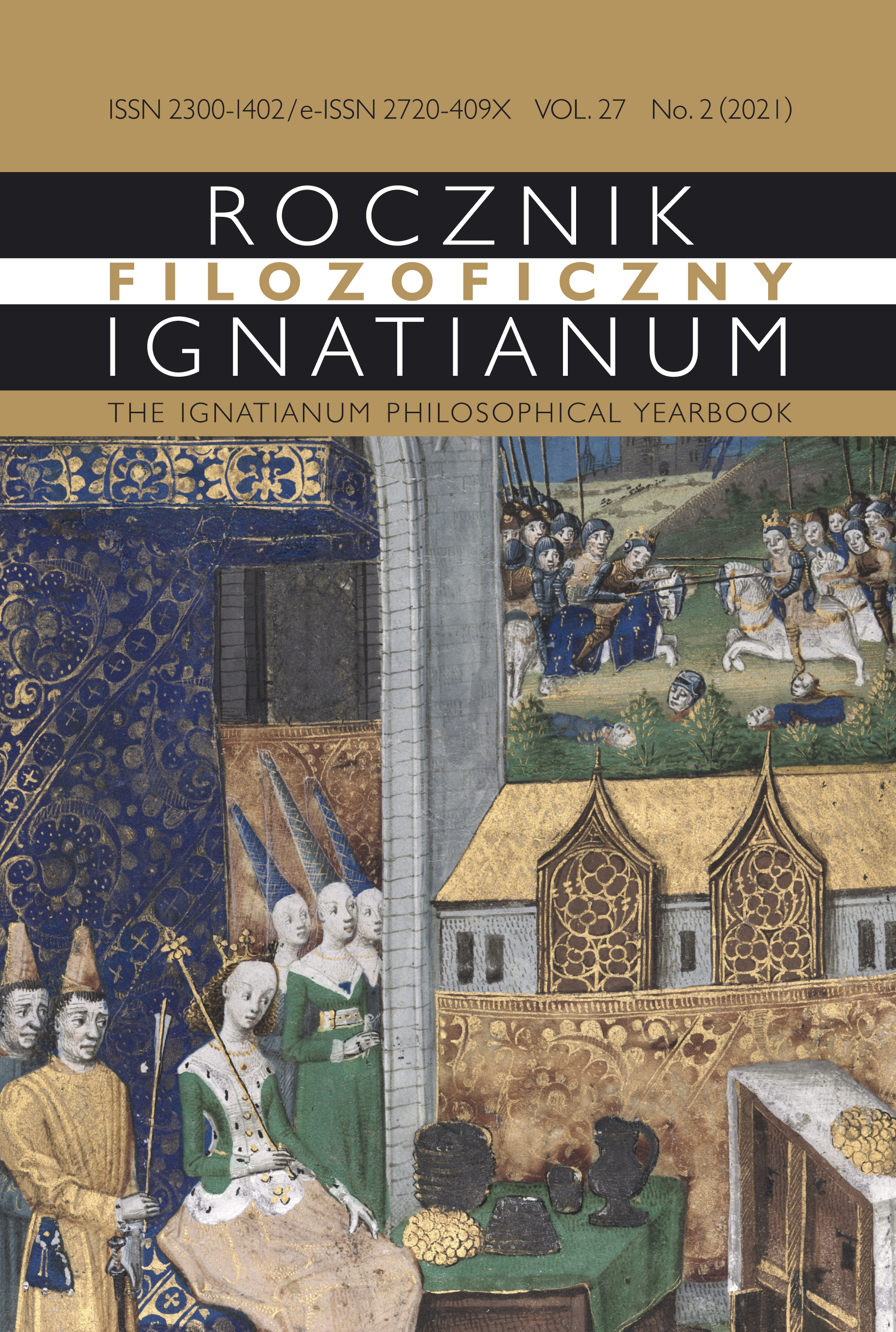Czy efekt hamowania powrotu uwagi (IOR) to świadomość przedmiotu bez udziału uwagi czy uwaga bez przedmiotu i udziału świadomości?
Abstrakt
Zagadnieniem kluczowym w dyskusji na temat związku uwagi ze świadomością, do której nawiązuje poniższy tekst, staje się pytanie o to, co może stanowić przedmiot uwagi wzrokowo-przestrzennej. Można je oczywiście także odnieść do fenomenologicznej problematyki intencjonalności (np. sprawy relacji noeza-noemat). W dyskusji tej Christopher Mole przywołuje obecne na gruncie psychologii potocznej przekonanie, zgodnie z którym jesteśmy świadomi wszystkiego, na co zwracamy uwagę, ale nie zwracamy uwagi na wszystko, czego jesteśmy świadomi. Innymi słowy, uwaga traktowana jest tutaj jako warunek wystarczający, ale niekonieczny dla świadomości. Mole przywołuje również na poparcie tej tezy wyniki badań z zakresu psychologii eksperymentalnej. Jednakże, badania chociażby Roberta Kentridge’a, Lee de-Wita i Charlesa Heywooda, dotyczące zaburzenia neurologicznego zwanego ślepowidzeniem (blindsight), częściowo podważają tezę prezentowaną przez Mole’a, wskazując na możliwość dysocjacji uwagi i świadomości w sytuacji, gdy uwaga wzrokowo-przestrzenna nie jest warunkiem wystarczającym dla świadomej percepcji. W kontekście przywołanej dyskusji tematem obecnego artykułu jest efekt poznawczy określany najczęściej jako hamowanie powrotu [uwagi] (Inhibition of Return – IOR). Sądzę mianowicie, że przy zastosowaniu tzw. metody mikrofenomenologii można w zależności od momentu dynamicznej mikrostruktury tego fenomenu wskazać w jego przebiegu wszystkie opcje, które pojawiają się w powyższej dyskusji. Jednym z wiodących zagadnień artykułu jest również propozycja Mole’a powiązania pojęcia uwagi z problematyką sprawczości (agency). Niejako w odpowiedzi podjęta zostanie tutaj próba rekonceptualizacji pojęcia uwagi w kategoriach ucieleśnionej prerefleksyjnej intencjonalności sformułowanej na gruncie fenomenologii przez Maurice’a Merleau-Ponty’ego.
Copyright (c) 2021 Akademia Ignatianum w Krakowie

Utwór dostępny jest na licencji Creative Commons Uznanie autorstwa – Bez utworów zależnych 4.0 Międzynarodowe.
Rocznik przyjmuje do druku wyłącznie materiały, które nie wchodzą w żaden konflikt interesów, żaden konflikt z prawem autorskim itp. Redakcja prowadzi działania przeciw: plagiatom, ghostwriting1, guest/honorary authorship2 itp. Autor pracy zbiorowej, który jest pierwszy na liście, bierze na siebie odpowiedzialność i ma obowiązek przedstawić wkład wszystkich współautorów. Jeśli publikacja powstała dzięki dedykowanym środkom finansowym, należy ujawnić to np. w Podziękowaniu, przypisie itp. Ew. przedruki wymagają jawnego zgłoszenia i okazania odpowiedniego pozwolenia wydawniczego. Autorzy / Recenzenci nierzetelni narażają się na reakcję właściwą stosownym instytucjom.
______
1 Ma to miejsce, gdy osoba mająca istotny wkład jest pominięta na liście Autorów czy w Podziękowaniu.
2 Zachodzi, gdy na liście autorskiej pojawia się osoba mająca znikomy/żaden udział w pracy.





